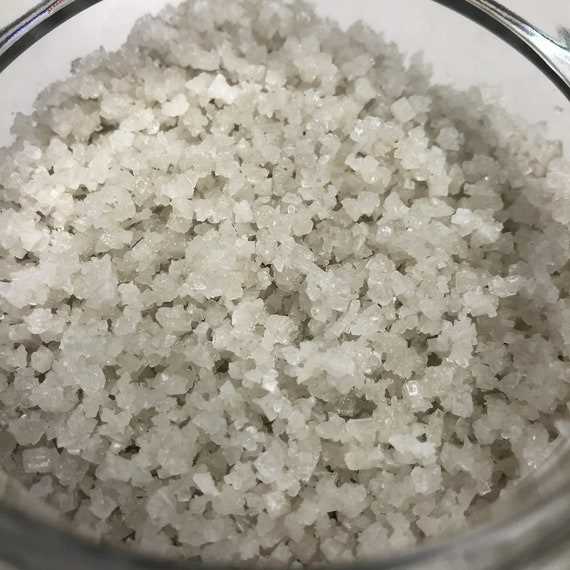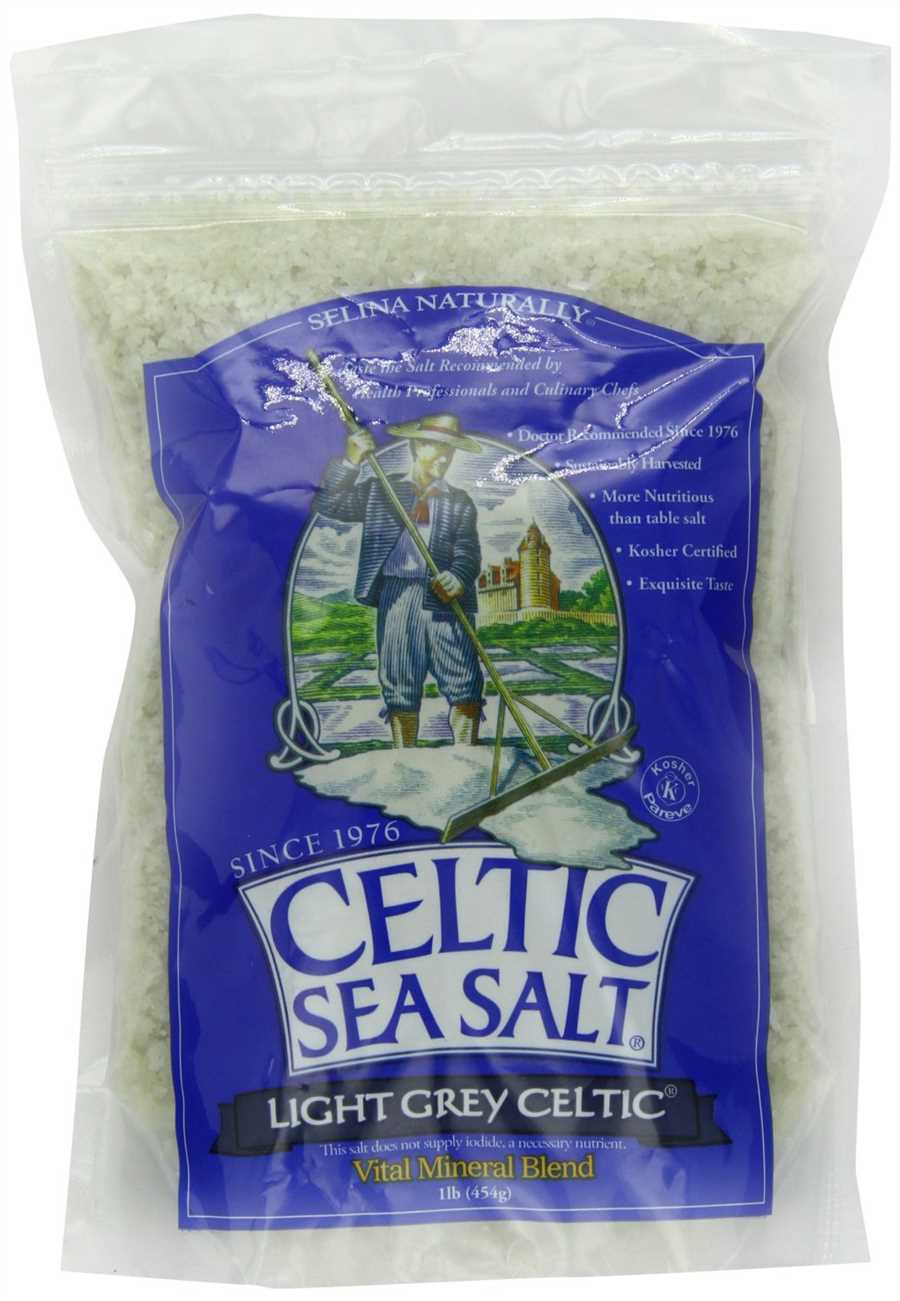Celtic Sea Salt is known for its unique taste and mineral-rich nature. It is believed to be one of the purest and most natural forms of salt available. But can you use it for cooking? The answer is a resounding yes!
Many chefs and home cooks alike choose Celtic Sea Salt for its distinct flavor and versatility in the kitchen. Its coarse texture and slightly moist nature make it perfect for sprinkling on top of dishes or adding to recipes for an extra burst of flavor.
In addition to its culinary benefits, Celtic Sea Salt is also touted for its health benefits. It is thought to contain more than 80 minerals and trace elements, including magnesium, potassium, and calcium, which can be beneficial for overall well-being.
When using Celtic Sea Salt in your cooking, it is important to note that it is slightly less salty than regular table salt. This means you may need to use slightly more to achieve the same level of seasoning in your dishes. However, the unique flavor and mineral content make it worth the adjustment.
So, whether you are a professional chef or a home cook looking to add a new dimension of flavor to your dishes, don’t hesitate to experiment with Celtic Sea Salt in your cooking. Its distinct taste and health benefits make it a great addition to any kitchen.
The Benefits of Cooking with Celtic Sea Salt
Celtic sea salt, derived from the coastal regions of France, has gained popularity in recent years as a healthier alternative to table salt. Here are some benefits of cooking with Celtic sea salt:
1. Rich in Minerals
Celtic sea salt is packed with essential minerals that are beneficial for the body. These minerals include magnesium, potassium, and calcium, among others. By using Celtic sea salt in your cooking, you can ensure that you are getting these vital minerals in your diet.
2. Enhanced Flavor

When compared to regular table salt, Celtic sea salt has a more complex flavor profile. It offers a subtle briny taste and can enhance the overall flavor of your dishes. The unique taste of Celtic sea salt is one reason why many chefs prefer to use it in their recipes.
3. Natural and Unrefined
Unlike table salt, which is heavily processed and stripped of its natural minerals, Celtic sea salt is unrefined and retains its natural nutrients. This makes it a healthier option for seasoning your food.
It’s important to note that while Celtic sea salt offers several health benefits, it should still be used in moderation. As with any type of salt, excessive consumption can have negative effects on your health.
Overall, cooking with Celtic sea salt can add depth to your dishes while providing valuable minerals. So, next time you’re in the kitchen, consider reaching for this natural salt and give your meals a touch of Celtic flavor.
Enhancing Flavor and Texture
When cooking with Celtic sea salt, you can enhance the flavor and texture of your dishes in several ways.
1. Flavor Enhancement

Celtic sea salt is known for its rich flavor profile. It has a slightly sweet and earthy taste, which adds depth to your dishes. By using Celtic sea salt in your cooking, you can elevate the flavors of your ingredients.
You can use Celtic sea salt as a finishing salt to enhance the natural flavors of your dishes. Sprinkle a pinch of Celtic sea salt on top of roasted vegetables, grilled meats, or even chocolate desserts to bring out their taste.
In addition to its flavor-enhancing properties, Celtic sea salt also has a lower sodium content compared to table salt. This allows you to season your food without overpowering it with a salty taste.
2. Texture Improvement
Celtic sea salt has a coarse texture, which can add a pleasant crunch to your dishes. By using Celtic sea salt as a finishing salt, you can create a contrast in texture and make your dishes more interesting.
For example, if you’re preparing a salad, sprinkle some Celtic sea salt on top to add a crunchy texture to the fresh vegetables. Or, when baking bread, you can use Celtic sea salt to create a crusty exterior.
Furthermore, Celtic sea salt can also be used as a seasoning salt in marinades and rubs. Its coarse texture helps to create a flavorful crust on grilled or roasted meats, adding both taste and texture to your dish.
Natural Mineral Content
Celtic sea salt is known for its rich natural mineral content. Unlike regular table salt, which undergoes a refining process that removes most of its minerals, Celtic sea salt is unrefined and retains its natural mineral composition. It is harvested from coastal regions and contains a variety of beneficial minerals such as magnesium, calcium, potassium, and trace elements like zinc and iodine.
The high mineral content of Celtic sea salt not only enhances the flavor of your dishes but also provides additional health benefits. Magnesium, for example, plays a vital role in muscle and nerve function, blood pressure regulation, and maintenance of a healthy immune system. Calcium is important for bone health, while potassium helps regulate fluid balance in the body.
| Mineral | Benefit |
|---|---|
| Magnesium | Supports muscle and nerve function, immune system health |
| Calcium | Essential for strong bones and teeth |
| Potassium | Regulates fluid balance in the body |
| Zinc | Supports immune system and metabolism |
| Iodine | Essential for thyroid function and hormone production |
In addition to these minerals, Celtic sea salt also contains trace elements that are crucial for various bodily functions. These trace elements include iron, manganese, copper, and selenium, among others. By using Celtic sea salt in your cooking, you can ensure that you are adding a natural source of minerals and trace elements to your diet.
It’s important to note that while Celtic sea salt offers these natural mineral benefits, it should still be consumed in moderation, just like any other type of salt. Too much salt in the diet can lead to health problems, such as high blood pressure. Therefore, it’s best to use Celtic sea salt as part of a balanced and varied diet.
Health Benefits of Celtic Sea Salt
Celtic Sea Salt is a natural, unrefined salt that comes from the Atlantic seawater off the coast of Brittany, France. It is harvested using traditional methods that have been passed down for centuries, ensuring its purity and high mineral content. Here are some of the health benefits of using Celtic Sea Salt:
| 1. Rich in Minerals | Celtic Sea Salt contains over 80 minerals and trace elements that are essential for the body’s proper functioning. These minerals include magnesium, calcium, potassium, and iron, among others. By using Celtic Sea Salt in your cooking, you can easily incorporate these vital nutrients into your diet. |
| 2. Promotes Hydration | Unlike table salt, which can actually dehydrate the body, Celtic Sea Salt helps to promote proper hydration. It aids in the absorption of water at the cellular level, allowing your body to stay hydrated for longer periods of time. |
| 3. Supports Digestion | The minerals in Celtic Sea Salt stimulate the production of digestive enzymes in the stomach, helping to break down food more effectively. This can improve digestion and reduce common digestive issues such as bloating and gas. |
| 4. Balances Electrolytes | Celtic Sea Salt contains electrolytes, such as sodium and potassium, that are essential for maintaining proper fluid balance in the body. These electrolytes help to regulate hydration levels, nerve function, and muscle contractions. |
| 5. Provides Antioxidants | Celtic Sea Salt is rich in antioxidants, which help to neutralize harmful free radicals in the body. These free radicals can contribute to oxidative stress and increase the risk of chronic diseases. Including Celtic Sea Salt in your diet can provide an extra boost of antioxidants. |
Overall, incorporating Celtic Sea Salt into your cooking can provide numerous health benefits. Its rich mineral content, ability to promote hydration, support digestion, balance electrolytes, and provide antioxidants make it a healthier alternative to table salt. Make sure to use Celtic Sea Salt in moderation as part of a balanced diet.
Using Celtic Sea Salt in Different Recipes
Celtic sea salt is a type of salt that is harvested from the coastal region of Brittany, France. It is known for its distinctive flavor and unique texture, which can enhance the taste of various dishes. Here are some delicious recipes that you can try using Celtic sea salt:
-
Roasted Vegetables
Preheat your oven to 400°F (200°C). Cut your favorite vegetables into bite-sized pieces, such as carrots, potatoes, bell peppers, and zucchini. Toss the vegetables in olive oil, sprinkle Celtic sea salt, and spread them on a baking sheet. Roast for about 20-25 minutes or until they are tender and golden brown. Serve as a side dish or add them to salads.
-
Grilled Salmon
Preheat your grill to medium-high heat. Season a salmon fillet with Celtic sea salt, black pepper, and a squeeze of lemon juice. Place the salmon on the grill, skin side down, and cook for about 4-5 minutes. Flip the salmon and cook for an additional 4-5 minutes or until it is cooked through. Serve with a side of roasted vegetables or a fresh salad.
-
Quinoa Salad
Cook quinoa according to package instructions and let it cool. In a large bowl, combine cooked quinoa, chopped vegetables (such as cucumber, cherry tomatoes, and red onion), and fresh herbs (such as parsley and mint). Drizzle with olive oil, lemon juice, and sprinkle Celtic sea salt. Toss everything together and let the flavors meld in the refrigerator for at least 1 hour before serving.
-
Homemade Salad Dressing
In a small bowl, whisk together olive oil, Dijon mustard, red wine vinegar, Celtic sea salt, and black pepper. Adjust the amounts to your taste preferences. Drizzle the dressing over your favorite green salad or use it as a marinade for grilled chicken or tofu.
-
Dark Chocolate Bark
Melt dark chocolate in a microwave or using a double boiler. Stir in dried fruits (such as cranberries and apricots) and chopped nuts (such as almonds and pistachios). Spread the mixture onto a lined baking sheet and sprinkle Celtic sea salt on top. Let it cool and harden in the refrigerator for at least 1 hour before breaking it into pieces.
These are just a few examples of how you can use Celtic sea salt in your culinary creations. Its natural flavor and mineral content can elevate the taste of any dish, whether it’s savory or sweet. Experiment with different recipes and enjoy the benefits of cooking with Celtic sea salt!
Questions and answers
Can you use Celtic sea salt for cooking?
Yes, you can definitely use Celtic sea salt for cooking. It is a natural and unrefined salt that can enhance the flavor of your dishes.
What are the benefits of cooking with Celtic sea salt?
There are several benefits of cooking with Celtic sea salt. It contains essential minerals and trace elements that can promote good health. It also enhances the flavor of your dishes and adds a unique taste.
Is Celtic sea salt better for cooking than regular table salt?
Celtic sea salt is often considered better for cooking than regular table salt. It is unrefined and retains more of its natural minerals, making it a healthier option. It also has a more complex flavor profile.
Can Celtic sea salt be used for baking?
Yes, Celtic sea salt can be used for baking. It can add depth and complexity to your baked goods, enhancing their flavor. Just make sure to adjust the amount of salt used, as Celtic sea salt can be stronger than regular table salt.







